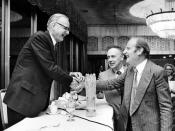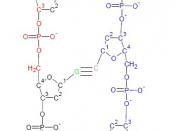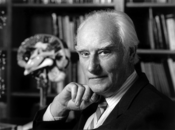James D. Watson and Francis Crick made a huge impact on the world of biology and DNA. James Watson had been interested with how living things work ever since he was a child. After reading Erwin Schroedinger's book, "What is Life", Watson changed his interest from birds, to a much more important field, genetics. Francis Crick was a British physicist, molecular biologist, and neuroscientist. These men were a team, however, it took the help of many others to get them through their diligent studies of DNA.
For the most part, this was how I expected things in the science world to work. Though it seemed less organized than what I would have thought. I would have thought that the constant experiments would all be planned out on a schedule. However, of course there would be some epiphanies in your own private living. One thing that did not surprise me is how much scientists work together.
They put their knowledge and ideas together, in order to form reasonable hypotheses. Many scientists were inspired by each other also, like Watson seemed extremely ambitious after seeing Linus Pauling's rendition of the a-helix. However, other people would dine with fellow scientists and discuss ideas only to steal them for their own benefit. For the most part, James D. Watson and Francis Crick would not have become successful without the help of others. The first person who really helped them along the way were Maurice Wilkins, he taught Watson the basics of X-ray diffraction. Next was, Sir Lawrence Bragg, because they were working under his supervision and direction. Although not enjoyable to work with, Rosalind Franklin gave them copies of her DNA X-rays. And finally Linus Pauling, he was mostly just inspiration for their ideas about the helix. Overall, this is how I had imagined...


